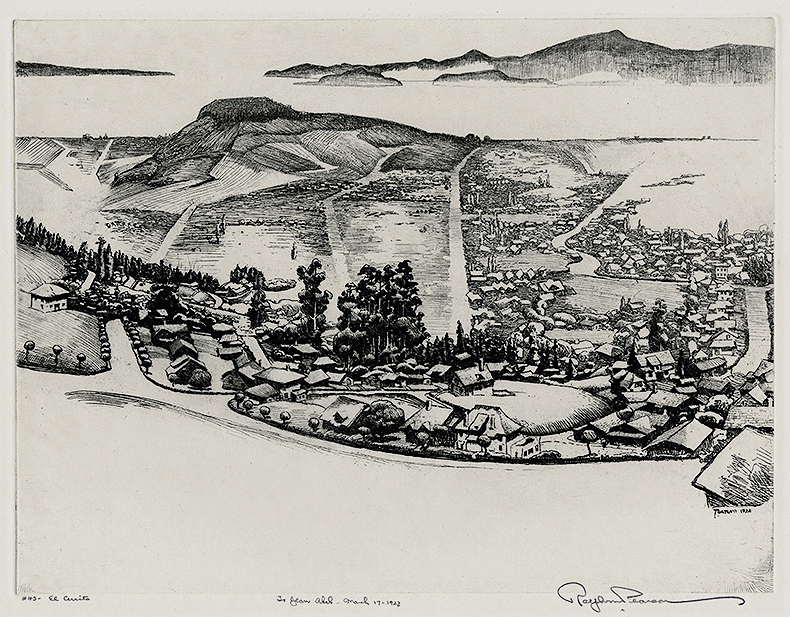
19th, 20th & 21st Century Fine Prints
707-546-7352 · fax 707-546-7924 · web: www.annexgalleries.com · email: artannex@aol.com
El Cerrito by Ralph Mosher Pearson

El Cerrito
Ralph Mosher Pearson
El Cerrito
Ralph Mosher Pearson
1883 - 1958 (biography)A view of the San Francisco Bay and the city of El Cerrito, California from the Berkeley hills. The gap in the horizon is the "Golden Gate", before the bridge was built. Rising above the fog to the right is Marin County with Mount Tamalpais and to the left, San Francisco, perhaps a panoramic view from the home of fellow etcher John W. Winkler. In the middle ground is Albany Hill and to the right is the city of Richmond, California. The houses in the foreground are located in the Kensington area of the Berkeley Hills, Alameda County, below Tilden Park. This impression is dedicated to California printmaker Jean Abel (1906-1991).
Ralph M.Pearson was a founding member of the “Needle Club” which became the Chicago Society of Etchers and his early representational etchings were profoundly influenced by the work of Joseph Pennell. After viewing the Armory Show of 1913 at the Art Institute of Chicago, Pearson was intrigued by the modernist approach to imagery of many European artists. He moved to New York and he stated that he found “the first school of modern art in this country, taught by Hugo Robus,” and where he was to “inaugurate a painful unlearning and relearning process of some eight years' duration which was a cheap enough price to pay for a basic reorientation.”
In 1919, Pearson moved to New Mexico and established his home and studio in the foothills of the Taos mountains. Forever the entrepreneur, he established a greeting card company that produced cards featuring his etchings. In 1923, he moved to California but, by 1928, he had returned to New York where he taught for ten years at the New School for Social Research.
He was a member of and exhibited with Chicago Society of Etchers, the Art Students League of Chicago, the New York Society of Etchers, the California Art Club, the California Society of Etchers, and the Brooklyn Society of Etchers. His work is represented in the collections of the Art Institute of Chicago, the Indianapolis Museum at Newfields, the Fine Arts Museums of San Francisco, the Library of Congress, and the Smithsonian American Art Museum.
